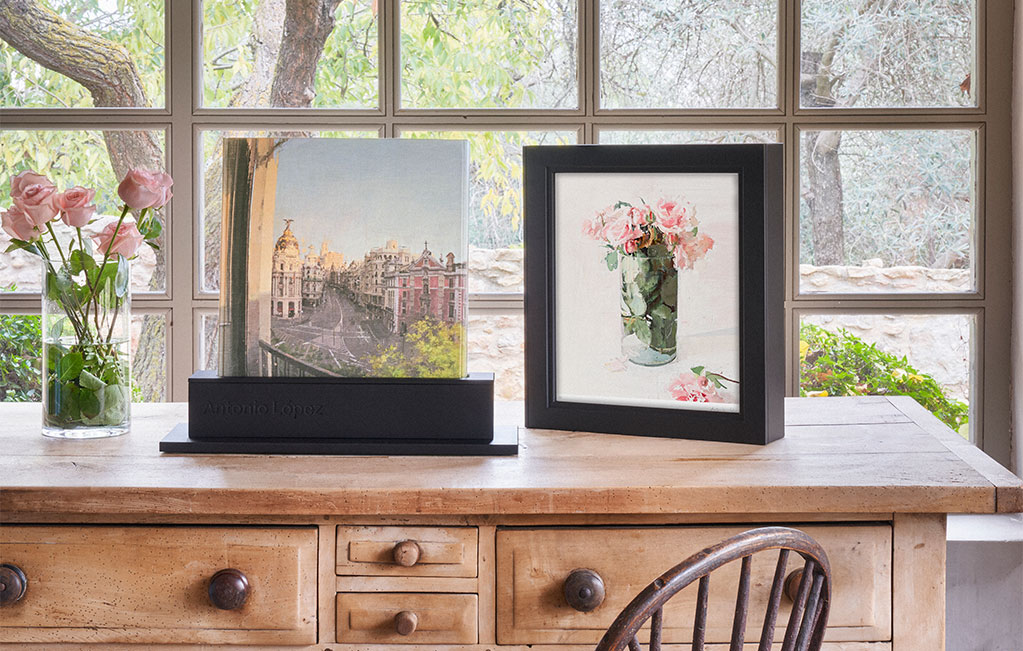Antonio López: the painter’s voice
Antonio López García was born on January 6, 1936, and with each passing year since, one of the most influential artists on the national and international art scene has been shaped. Painting became the pinnacle of his passion for landscapes, which he approaches from specific viewpoints, finding in them a wordless language. As he sums up the eighth decade of his life, Antonio López continues to search for voices that reveal his vision of the world.
- Painting: an objective yet unique trace
“What you offer others is not the vision of the place, but your vision of the place.”
For the early Antonio López, painting and copying were perfect synonyms, but years and experience taught him that art is filled with nuances. His work is realistic yet unique, transferring to the canvas select moments of a shared reality. The scenes that make up the Landscapes edition are a perfect example of this. He explores the body of cities, their streets, and houses, making us momentarily doubt whether they are ours because López captures them from precise perspectives and meticulously studied times of day. Beyond being established as a figurative painter, he is undeniably autobiographical.
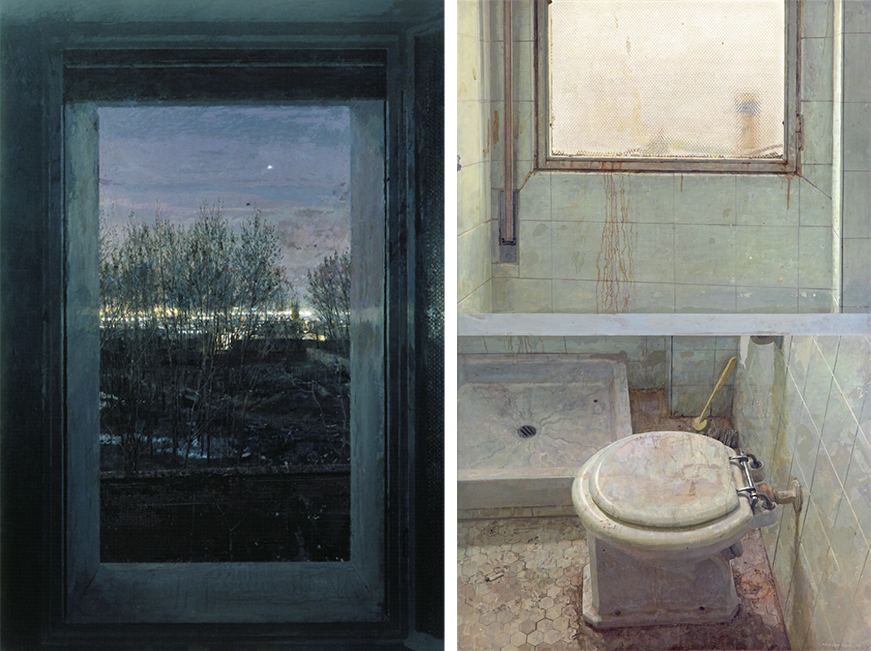
Left: Ventana de noche (Window at night), 1971-1975-1980.
Right: Taza de váter y ventana (Toilet bowl and window), 1968-1971.
Every artistic journey experiences a social turning point, a defining moment when an artist, with a certain level of professional maturity, realizes the expectations of their audience. Society becomes a part of the equation and demands from the artist. However, López approaches this matter from a less judgmental perspective: as long as everything is done “with the same emotion,” it does not matter whether the works are commissioned, insignificant suggestions, or purely individual impulses.
- Family: Antonio López Torres and María Moreno Blasco
“Art is very difficult because there are no fixed rules. Back then, there were: a prevailing general style existed. Now, everyone has to create their own work. So, you face many doubts, and we have helped each other greatly.”
To the painter, Antonio López Torres is the beginning of it all. López speaks of his uncle as a guide in an art history context filled with uncertainty, where the lack of rules is as liberating as it is discouraging. Sharing a century with Hopper and Balthus, the Manchego admires them from afar, focusing instead on the closer figure: his uncle, the first person to recognize his talent, who encouraged him to pursue painting in life and academia.
Mari, or María Moreno Blasco, entered the painter’s life in 1954 as a first-year student at the Madrid School of Fine Arts during his last year. With just one dance, López discovered the rest of his life. Throughout the relationship and marriage, the artists inspired each other, sharing a love for landscapes and learning from each other because of their differing experiences and visual interpretations of the world. Antonio López also learned from the paintings his wife created of the same places he painted, revealing thematic elements that shaped his essence through these contrasts of subjectivity.
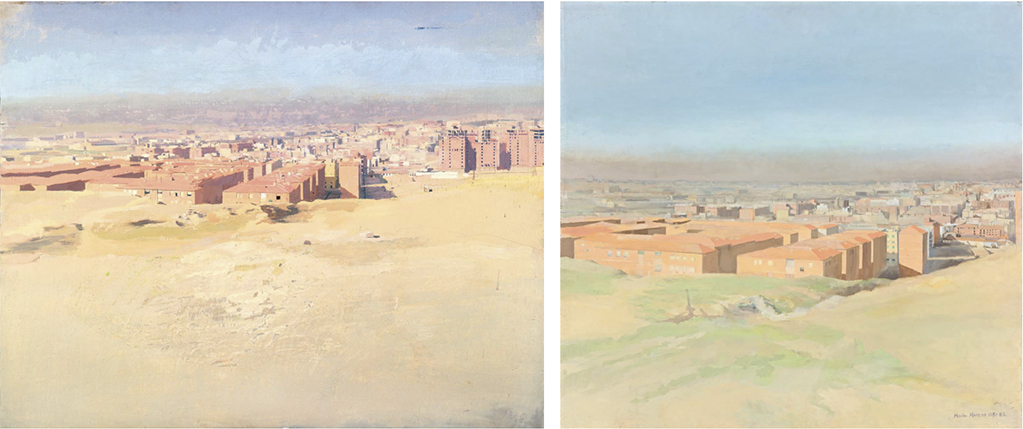
Left: Vallecas, 1977-1980, Antonio López.
Right: Vallecas, 1980-1985. María Moreno.
- The streets: peripheral Madrid
“A place that moves me, because I find an echo of my life in those places, is where Madrid ends in the countryside, on the periphery. The border areas of Madrid.”
Emperador Carlos V square, where Atocha Station is located, is the first urban scene the artist painted on-site, as painting places directly is different from painting them from a window overlooking them. According to the painter, one’s city is where one lives but, above all, where society attends, understands, and protects the artist. For Antonio López, Madrid is home.
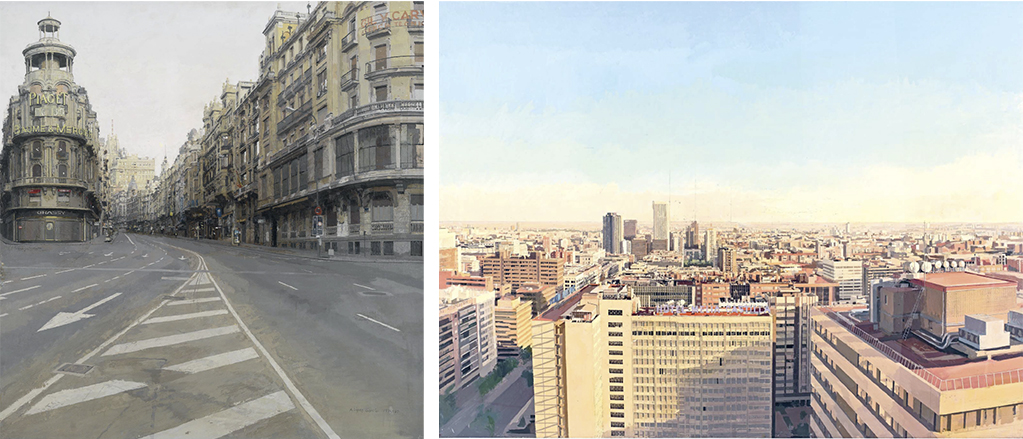
Left: Gran Vía, 1974-1981.
Right: Madrid desde Capitán Haya (Madrid from Capitán Haya), 1987-1996.
There are other elements and sensations that led him to paint Gran Vía: the impression of architecture punctuated, highlighted, by light. Most often, Antonio López paints what is in front of him because it moves him or, more specifically, because it reminds him of what he has lived. While copying reality is something he could do with ease since the age of 13, his brush flows only when there is closeness and familiarity in it, which is why, paradoxically, the artist paints common spaces. He turns to Madrid’s borders, those public yet decentralized corners where spaces resemble Tomelloso more than they do Madrid.
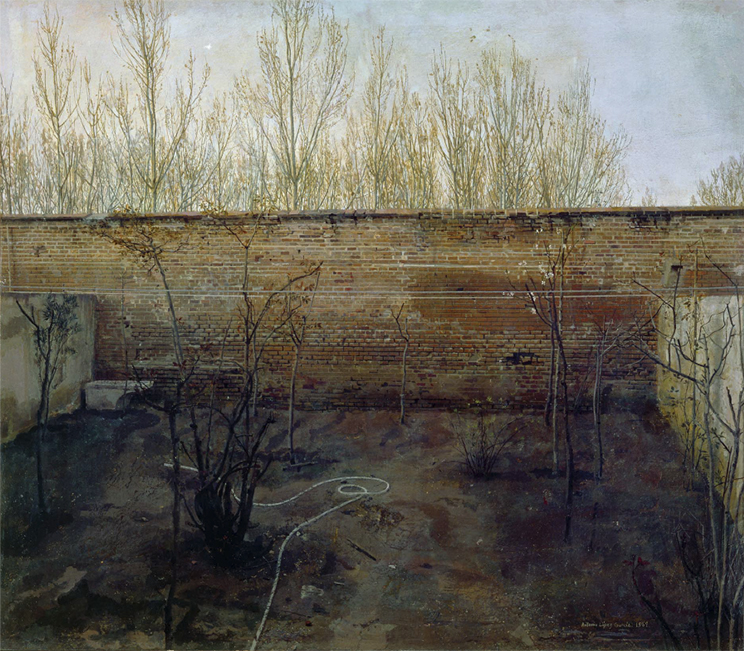
El jardín de atrás (The back garden), 1969.
- Books: discovering distant art
“I had an eagerness to learn and no money to travel. I first got to know what I loved through books.”
Starting from scratch means that what you aspire to feels far away, especially in the complex world of art. The perfect places and moments exist, the scenes are exclusive, and the audience is privileged. Antonio López was born with this ease and passion for painting, and his determination to make it his life forced him to move, as the place conditions the artist’s potential.
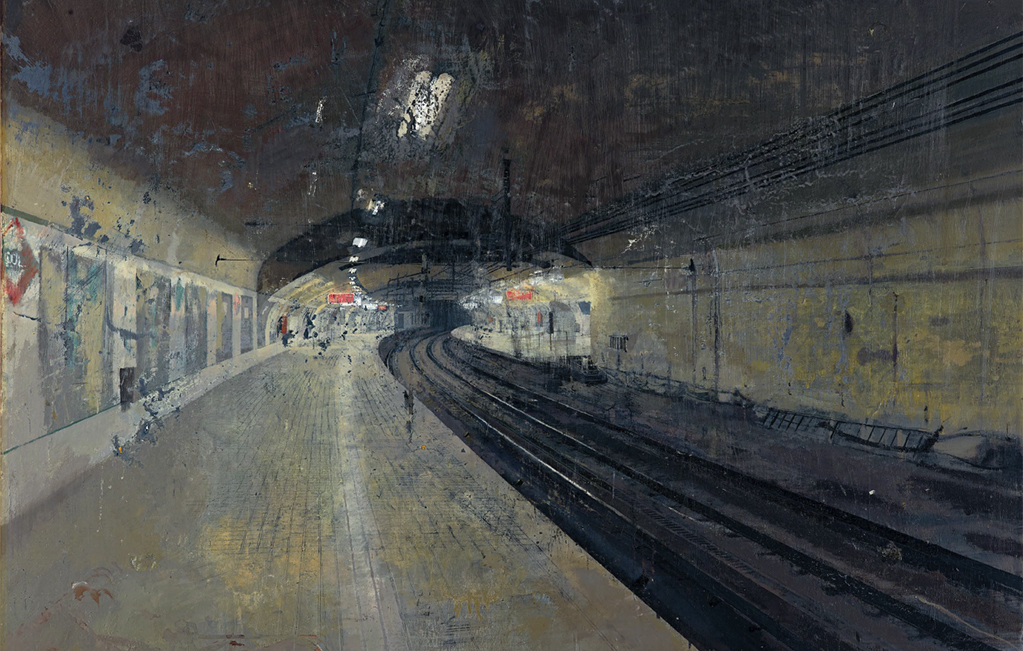
El metro (The subway), 1970-1972.
One might think that academic texts would be the first step toward his dream when, in fact, books have always been the most important constant for the artist. From an early age, he discovered through them that he could travel despite his limitations, such as lack of resources, experience, and credentials. Over the years, books brought him closer to this remote and seemingly unattainable ideal while feeding his ambition.
- The painter’s voice
“When it comes to painting, the painter has no voice. It is as if they cannot speak, only paint. And I always miss the painter’s voice.”
Beyond the work’s title and the name of the series it belongs to — if it is part of one — there seems to be no physical space for words. Antonio López, like many other artists, leaves his views to professionals: painting critics, analysts, art historians, and even the voices from the street.
According to the painter, rarely is there work without anecdote, and this, combined with his love for literature, has led to a search for his voice that intertwines with his artistic journey. Now, as an artist well-established on the global art scene, López reevaluates the services literature offers him, finding in it what painting cannot provide: a clear and direct explanation. In fact, Landscapes seeks to satisfy this artistic restlessness, granting the painter the power of words in pursuit of the ultimate painting experience.
Landscapes by Antonio López:
Limited edition of 2,998 copies, hand-numbered and signed individually by the artist.
The piece consists of a Art Book and a giclée print, stored and displayed in an exclusive case designed for this edition.
The Art Book is a vital and artistic journey through texts and paintings, chronologically showcasing the influence of life on his work and of painting on his life.
The giclée print, on museum-quality cotton paper, bears the artist’s digital signature.
